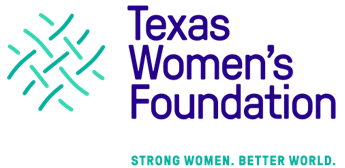Via: My Sweet Charity
By: Jeanne Prejean
Communities Foundation of Texas and Dallas Women’s Foundation along teamed up with The Vaid Group and Faces of Giving to provide a better understanding of the expanding world of philanthropy on Tuesday, October 30. Filling Communities Foundation of Texas’ main hall, the 350 guests learned how to identify and work with “high net worth” donors. Here’s a report from the field:
On Tuesday, October 30, Communities Foundation of Texas (CFT) and Dallas Women’s Foundation (DWF) hosted a free discussion entitled “Diversity in Philanthropy: Understanding, Engaging and Networking the High Net Worth Donor of Color,” in partnership with The Vaid Group and Faces of Giving.
DWF President and CEO Roslyn Dawson Thompson welcomed everyone to CFT and introduced the researchers and the panel. The event began with presentation of a report entitled, “The Apparitional Donor: Understanding and Engaging High Net Worth Donors of Color.” Following the presentation, CFT Chief Relationship Officer Monica Egert Smith moderated a panel discussion on the report with Paula Parker, one of the high net worth donors of color that was interviewed for the report; Ashindi Maxton, independent strategist and donor advisor and a member of The POC Donor Collaborative Project Team; Tuhina De O’Connor, co-founder of Faces of Giving, Inc.; and Hali Lee, executive director of Faces of Giving, Inc.
The 350 attendees stayed late after the presentation to network and get to know each other. Attendees included several of the DWF board like Caren Lock as well as many other donors of color.
The study released is the result of groundbreaking research on engaging and networking high net worth (HNW) donors of color. The study calls high net worth donors of color “apparitional in the field of philanthropy – rare and unusual phenomena, a spectral presence whose existence itself requires proof.” In short, not only are HNW donors of color hard to identify, they are hard to find.
The goal of the report and the event’s discussion was to identify ways to engage these potential donors of color. “The need for high net worth donors of color in philanthropy has never been more apparent,” the lead researcher, Urvashi Vaid asserted. “In a moment marked by urgently high levels of racism, nationalism, and xenophobia, over-policing and state abandonment based on race, nationality, economic status, ethnicity, gender identity and sexual orientation, new resources are needed that can be directed to the affected communities.”
The researchers reported that HNW donors of color are “keen to help create opportunities for others, as others have done for them, often through education and gifting money to family and friends.” The tradition of giving in communities of color has long been a part of these cultures and considered a priority. They might not necessarily identify with the word “philanthropy” but indeed that is what it is.
“We are delighted to co-host this discussion as we see an enormous opportunity to strengthen our communities through greater engagement in our ongoing efforts by donors of color,” said Dave Scullin, president and CEO of CFT. “High net worth donors of color provide much more than resources—they provide insight, focus, and leadership vital to building a community where all can thrive.”
While the study was conducted nationwide, approximately a fifth of the HNW donors of color interviewed were from the larger Dallas area. All those interviewed from North Texas held bachelor’s degrees, with a third of the group holding bachelor’s degrees alone, another third having earned master’s degrees, and another third holding professional or doctorate degrees. The average amount contributed by those interviewed from North Texas was more than $140,000 per year. Half of them have liquid investible assets of $1 to $5 million dollars; a third with $5 to $10 million; just over 11 percent have $10 to $20 million; and, five percent have liquid investible incomes of $50 to $75 million.
The panelists presented their findings, which included a landscape analysis that examines the giving patterns and priorities of high net worth people of color. The study showed that, while these donors are generous and philanthropically engaged, they are often invisible to mainstream philanthropy and largely not even known to each other.
The research team also shared findings from interviews with dozens of high net worth donors of color and leaders of existing donor networks, as well as present lessons learned from previous attempts to organize donors of color. In addition, the team shared observations and recommendations, including the potential development of a network of high net worth donors of color interested in funding racial and social justice. This potential network could coalesce the community of high net worth people of color, elevating the reach and impact of their experiences, resources, and talents at a critically important time.
“We were excited to partner with the research team to connect them with members of our donor community, who represent current and former board members, and even founders of our organization. While we’ve been rooted in values of diversity and inclusion, and enjoyed longstanding support from women of color who are passionate about gender and racial equity, we know this study reveals a critical reality about the lack of diversity and inclusion within and by the philanthropic community at large. That means we have an even greater responsibility to engage, support, and celebrate the potency and power of donors of color at all levels,” said Roslyn Dawson Thompson, president and CEO, Dallas Women’s Foundation.
Diversity in donors creates stronger communities, the panelists agreed, “The treatment of high net worth donors of color as apparitions has material consequences,” the researchers said. “For one, it renders critical experiences, resources, and talent missing at a moment in which societal institutions are most in need of new ideas, investment, and innovation. It contributes to a landscape in which organized philanthropy in the US is inadequately focused on the experiences and needs of the African American, Latinx, Native American, Asian American, Indo-American, Middle Eastern, and other communities of color in the United States.”







